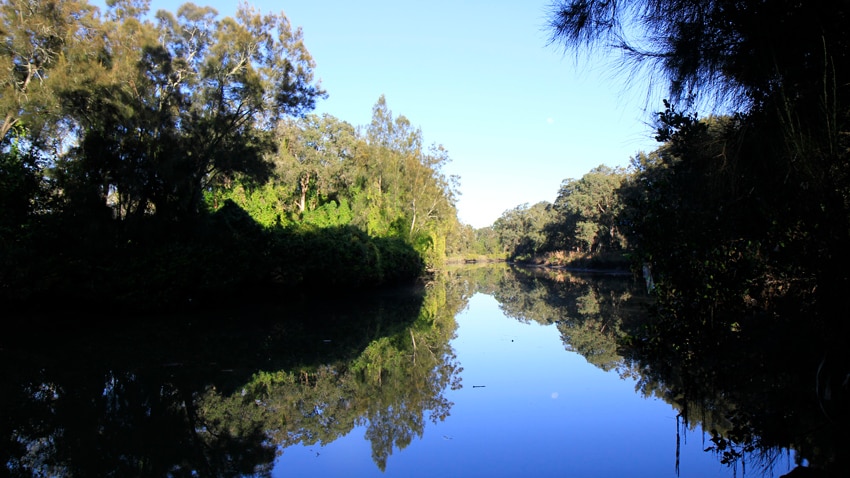Sydney Water has been convicted of polluting a Western Sydney creek by discharging hundreds of thousands of liters of untreated sewage into the waterway.
Key points:
- The overflow from the pumping station caused significant environmental damage to the Prospect Creek in Carramar
- Tankers were supposed to remove the waste but could not keep up with the flow
- More than 280,000 liters of sewage overflowed from the pumping station
The guilty verdict relates to an incident on January 15, 2019, which saw a major sewage overflow into the Prospect Creek at Carramar.
Prospect Creek is a major tributary of the Georges River and is used for recreational activities like fishing.
The contamination occurred after a sewer main at Carrawood Reserve in Carramar failed and the nearby pumping station had to be shut down so repairs could be undertaken.
Sydney Water knew there was risk sewage would overflow while the pumping station was shut down and arranged for tankers to be present to transfer the sewage to an alternative location.
However, the tankers were not able to keep up with the volume of overflow as site constraints meant only two tankers could operate at one time.
This meant raw sewage flowed through an underground pipe into the creek.
The incident was described as “significant” by a Sydney Water employee who notified NSW Health, NSW Fire and Rescue, WorkCover as well as the Environment Protection Agency (EPA).
It was estimated by a senior scientist from the NSW Department of Environment that between 11:59 pm on January 15 and 1:26 am on January 16 more than 280,000 liters of sewage overflowed from the pumping station.
Overflow from the broken main was estimated to be 318,000 litres.
This meant faecal bacteria in Prospect Creek exceeded the national guidelines for water quality by up to 7,900 times, the judgment said.
The overflow also caused increased levels of ammonia, and sewage odor and changed the color of the waterway.
Large areas of Coleman Park and the playing fields at Carrawood Oval were also affected.
Sydney Water argued a defense of necessity, claiming the overflow was necessary to avoid more dire consequences of failing to repair the main.
“The necessity … arose because shutting down the pumping station was required to prevent … unacceptable risk of harm to human health or life if the main was not able to be repaired as quickly as possible,” the judgment said.
However, Justice Tim Moore rejected this defence, noting there wasn’t sufficient evidence concerning the state of mind of those who decided to shut down the station.
The EPA brought three charges against Sydney Water for the incident, but the government-owned corporation was only found guilty on one count, which related to the decision to shut down the pumping station.
The authority, which pleaded not guilty to all charges, will be sentenced on September 6.
Sydney Water told the ABC it “welcomes” the finding of the court and will continue to work with the EPA to “protect and enhance the environment”.
.
